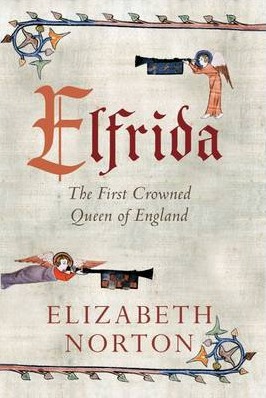 She was an Anglo-Saxon Queen, the first consort to be crowned Queen of England. Elfrida made a love match with her King Edgar, she was a powerful force behind the throne and influential in the tenth-century religious reform. Yet for over a millennium she has been accused of one of the most heinous of all crimes, the murder of her own stepson, Edward the Martyr. But was Elfrida truly the ultimate wicked stepmother, or is she the victim of centuries of slander? Elfrida’s life has been stolen from her. Historian Elizabeth Norton joins us to tell her story.
She was an Anglo-Saxon Queen, the first consort to be crowned Queen of England. Elfrida made a love match with her King Edgar, she was a powerful force behind the throne and influential in the tenth-century religious reform. Yet for over a millennium she has been accused of one of the most heinous of all crimes, the murder of her own stepson, Edward the Martyr. But was Elfrida truly the ultimate wicked stepmother, or is she the victim of centuries of slander? Elfrida’s life has been stolen from her. Historian Elizabeth Norton joins us to tell her story.
You have mostly studied medieval and Tudor-era historical women, why did you decide to look at Queen Elfrida?
I have always been fascinated by Anglo-Saxon queenship, particularly due to the fact that many previous books have simply stated that the Anglo-Saxons had no queens, identifying William I’s wife, Matilda of Flanders, as the first Queen of England.
In fact, although the royal house of Wessex in the ninth century was reluctant to call a king’s wife a queen, the tenth and eleventh centuries saw three particularly powerful women, all referred to as queens: Elfrida, Emma of Normandy and Edith Godwin. One reason for writing was that I wanted to show just how significant a queen Elfrida was.
I have previously written sections on the Anglo-Saxon queens in two of my books (She-Wolves and England’s Queens), but felt that there was still more to be said about Elfrida – and there was! I was also struck by the similarities between Elfrida and Anne Boleyn, something which I think drew me to her story in the first place.
It appears that Anglo-Saxon women were given more independence than their medieval descendants. You looked at female monasticism, education and marriage contracts, do you think the Anglo-Saxon woman had more advantages and a better position in society than the medieval woman?
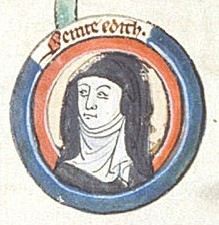
It depends on the status of the woman in question. The Anglo-Saxons still had slaves. For example, in the surviving Will of one noblewoman, she bequeathed some of her female slaves to a kinswoman. Slaves and other lowly members of society had few advantages or opportunities.
Noblewomen could, however, have some level of independence, particularly if they became nuns. The nunneries were almost exclusively female preserves, headed by a noblewoman as Abbess. Edgar’s second wife, Wulfthryth, who became Abbess of Wilton, and her daughter, Edith, who lived with her, were both powerful and independent. Edith was able to live very comfortably and, according to one source, was so politically active that she was offered the crown after her father’s death.
Secular noblewomen could also be powerful. While queens were rarely given any power or additional status during their husband’s lifetimes (Elfrida accepted), the position of queen mother was really powerful. Lower down the social scale, a nobleman’s landholding was divided between their ‘folk lands’ and ‘book lands’. While folk lands were hereditary, book lands could be left by Will, allowing favoured daughters to inherit considerable wealth. Elfrida, for example, was considered to be an heiress, even though she had a surviving brother.
Noblewomen were also commonly educated in nunneries (such as Elfrida’s stepdaughters, Edith – educated as Wilton – and Ethelflaed – educated at Romsey), something which allowed for a very good standard of education. In England, such standards for women were probably not reached again until the sixteenth century.
All in all, it was not a bad time to be a noblewoman!
Elfrida was involved in religious reform and officially named “protectress” of English nunneries. You mentioned she was met with some opposition particularly from Edgar’s second wife Wulfthryth, who he had forced to retire to a nunnery so he could marry Elfrida. Do you think the opposition was mainly due to Wulfthryth’s influence or was there another reason?
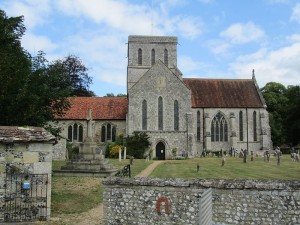
Wulfthryth was Abbess of Wilton, the premier nunnery in England, while her cousin, Wulfhild, was Abbess of Barking. Both women were opposed to Elfrida (for obvious reasons) and it is therefore no surprise that she is not remembered favourably in the sources for either nunnery. The only nunnery that records anything remotely favourable in relation to Elfrida is Romsey, where she placed her stepdaughter from her first marriage, a girl that she raised herself. Even then, the sources for Elfrida are lukewarm rather than glowing.
Efrida’s poor reputation in the English nunneries is probably due to the fact that, in her role as protectress of the nunneries, she was seen as interfering in their running. They had previously been largely autonomous and she therefore represented government interference. For example, she expelled Abbess Wulfhild from Barking, something for which she received a very bad press. The tenth century monastic reform movement, of which Elfrida was a leading member, was also not universally popular in the nunneries, something which accounts for the opposition to Elfrida and what she stood for.
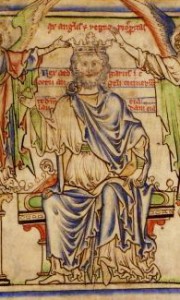
King Edgar seems to have given his wife a powerful position, he had her publicly crowned, gave her an official political position at court and named his younger son with Elfrida, Edmund, his “legitimate” heir over his older son, Edward, with his first wife Ethelflaed. Why did Edgar choose his third wife as his “most legitimate” wife?
Anglo-Saxon marriages were considerably more fluid than they became in the later medieval period. It was possible for a couple to marry in a ceremony not sanctioned by the church, something which led such unions open to claims of concubinage. The famous King Athelstan, for example, was the son of his father’s unofficial first marriage and, at first, was bypassed in the succession in favour of the son of a second church-married wife. King Edgar’s first wife, Ethelflaed, is a shadowy figure and was probably repudiated by the king in order to allow him to marry Wulfthryth. He then, in turn, repudiated Wulfthryth to marry Elfrida.
The sources suggest that Edgar and Elfrida made a love match. His marriage to Wulfthryth, on the other hand, was purely diplomatic – he had initially sought to marry her cousin and only turned to Wulfthryth when the cousin refused to leave her convent. He saw Elfrida as a more equal partner in his rule. Additionally, Edgar had imperial ambitions. He viewed himself as the overlord of Britain and part of presenting himself as an emperor involved having a royal consort. He wanted a queen. It was also established precedent in Anglo-Saxon England that the son of a crowned mother was more ‘throneworthy’ than his half-siblings, so it made sense that Edmund, as the son of the queen, was also considered to be heir over a half-brother who was merely the son of a discarded former wife.
However much power Elfrida may have wielded at court during her husband’s reign she seemed to be in danger after his death. Edgar’s older son Edward ignored his father’s will and deposed his legitimate heir. Elfrida did not contest Edward deposing her son Ethelred, rather she left court to live in the country with her son. Do you think she may have been working towards getting the throne back for her son or may she have been content to wait Edward’s reign out?
Elfrida certainly wanted her son to succeed. Edward’s coronation was very delayed, indicating that there was considerable uncertainty over who would become king. It is likely only his age (in his late teens as opposed to the seven year old Ethelred) which secured his election. In 975, Elfrida was forced to concede to the inevitable. England had never had a child king and it was improbable that Ethelred could be accepted in preference to his half-brother.
Earlier in the century it appears that the widow of King Edward the Elder, Eadgifu, made an alliance with her stepson, Athelstan (the son of Edward’s first wife), to support his claim to the throne over the children of his still-living second wife (who had been repudiated). The price of this alliance was that Athelstan would recognise Eadgifu’s children as his heirs. Elfrida may well have come to a similar agreement with Edward, particularly since he did not marry. Kings commonly married in their teens and it is therefore surprising that Edward did not take a wife. An agreement also fits with the fact that Edward felt comfortable enough with Elfrida to visit her home with only a small escort in 978.
I think Elfrida may have been content to wait the reign out, providing that Edward did not beget his own heir. Anglo-Saxon kings had a habit of dying young (as proved to be the case with Edward…)

Elfrida has been blamed for the murder of Edgar’s son, now named Edward the Martyr, yet you explained an instance where an earlier King, Athelstan, who had his half-brother drowned but admitted to the murder and did public penance. So even if she had not had an actual hand in the murder would she and her son Ethelred have been forgiven if she had attempted to seek out the public and give Edward a honourable burial?
Anglo-Saxon royal history is littered with suspiciously sudden deaths and I think there were probably a good few murders that went unrecorded. While Edward’s murder caused consternation, many contemporaries were particularly angry that his kin did not avenge him and did not arrange an honourable burial for him. Edward’s body was, at first, hidden and then hurriedly buried in an attempt to hush up the murder. It is likely that Elfrida was involved in this although (as you can see in my book) she was probably not responsible for planning the murder itself.
There was a reluctance to crown Ethelred after the murder, probably due to the circumstances of Edward’s death, and this was only resolved when he was ceremonially reburied at Shaftesbury Abbey in the presence of his half-sister, Edith, and prominent members of Ethelred’s faction. Following the murder, Ethelred was the only person who could become king and I think that everyone recognised that his accession was inevitable, providing that he made a show of honouring his half-brother.
While Edward did, eventually, receive an honourable burial, Elfrida and Ethelred were not really forgiven by their contemporaries. The burial was enough to atone for the murder, but they were still considered guilty of dishonouring him – the Viking attacks were largely believed to be due to Edward’s death and the poor treatment of his body.
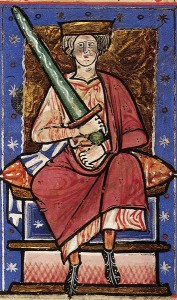
Elfrida’s husband was named Edgar the Peaceful yet her son was named Ethelred the Unready. When Ethelred came into his majority he rebelled against the power his mother had wielded during her regency and attempted to undo much of Elfrida and Edgar’s religious reform. Although his reign was later plagued by Viking attacks, do you think that he made a mistake sending his mother away from court in the early years of his reign?
Edgar’s reign is recorded as being almost devoid of incident, something which is a testament to his abilities as a strong ruler. The same cannot be said for his youngest son. Ethelred’s nickname ‘the Unready’ comes from the Anglo-Saxon word ‘Unraed’, which means ‘no counsel’. It is a pun on his name, which means ‘Noble Counsel’. By calling him ‘Noble counsel, no counsel’, contemporaries were essentially calling him stupid.
I think it’s fair to say that Ethelred faced considerable problems. The Vikings were a major threat during his reign and even briefly deposed him, something that his father had not had to deal with. That said, however, I doubt that anyone could consider Ethelred to have been a good king. After he sent his mother away from court he attempted to undo her religious policies, something which led to bad feeling and which he later came to regret.
Ethelred can have been expected to attain his majority at the age of fifteen or sixteen, yet he remained under the control of his mother and her closest ally, Bishop Ethelwold of Winchester, until the bishop’s death in 984 when he was around seventeen or eighteen. This suggests that Elfrida did not want to let go. She was able to return to court in 993, after reconciling with her son, but she never regained her former influence.
Elfrida seems to have ruled England well during Ethelred’s minority. Certainly, the troubles of the reign only begin to become apparent after 984. However, I’m not sure that she was capable of ridding England of the Vikings, any more than her son was. The first raids occurred during her regency, but it was in the early 990s that they became particularly dangerous. The scale of the raids was vast and the Vikings gradually changed their aims to conquest rather than raiding. Ethelred could perhaps have been more decisive in handling them, as his ancestor, Alfred the Great, had been, but even Alfred had been forced to accept a Viking presence in England. Who knows how Elfrida would have responded?
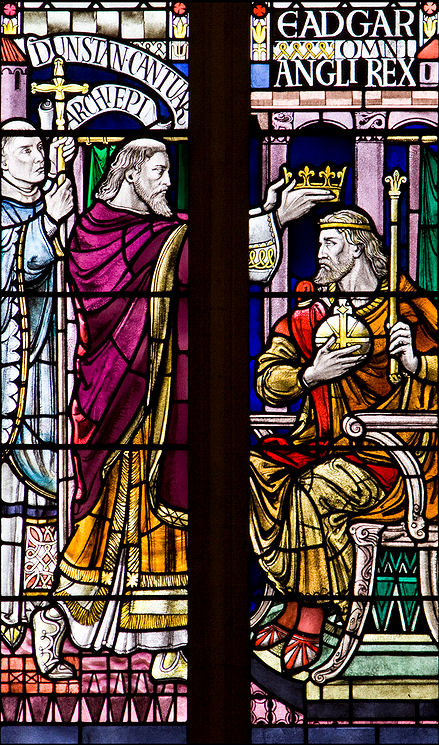
Elfrida was the first woman to be crowned a Queen of England. She is a remarkable, if elusive, figure, would you agree her reign and her measure of power was a significant contribution to the future Queens of England?
Elfrida was the first wife of a king of England to attain prominence and power during her husband’s lifetime, something which later queens, such as Emma of Normandy and the wives of the post-Conquest kings, would largely take for granted. In that sense, she defined the role, taking it beyond merely that of ‘king’s wife’ and, later, ‘mother of the king’. Elfrida’s role in the monastic reform movement was particularly important, with her role in the nunneries giving her an independent sphere of influence. She was certainly one of the most powerful people in tenth century England and (with perhaps the exception of her husband’s grandmother, Eadgifu) the most powerful woman of the Anglo-Saxon era.
The Norman queens deliberately based themselves on the last Anglo-Saxon queen, Edith Godwin, as part of William I’s attempts to portray himself as the heir to Edward the Confessor. By basing their role on Edith, however, the post-Conquest queens were actually referencing Elfrida, who was the first woman to define and develop the role.
*
Read Elizabeth Norton’s article on Queen Elfrida and Anne Boleyn.
Don’t miss our interview with Elizabeth on her new book The Boleyn Women.
With thanks to Amberley Publishing.
Elizabeth is a British historian, specialising in the queens of England and the Tudor period. She was awarded a double first in her undergraduate degree at Cambridge and has a Masters degree from Oxford. She is currently working part time towards a PhD in history at King’s College, London. The rest of the time, she writes books and articles about the Tudors, including biographies of four of Henry VIII’s wives.
Find out more at www.elizabethnorton.co.uk
Follow Elizabeth on Twitter @ENortonHistory
Elizabeth Norton on Facebook
Elfrida: The First Crowned Queen of England Published by Amberley Publishing 2013
Buy Elfrida: The First Crowned Queen of England
Contrary to popular belief, Anglo- Saxon England had queens, with the tenth-century Elfrida being the most powerful and notorious of them all. She was the first woman to be crowned Queen of England, sharing her husband King Edgar’s imperial coronation at Bath in 973. The couple made a love match, with claims that they plotted the death of her first husband to ensure that she was free. Edgar divorced his second wife, a former nun, after conducting an adulterous affair with Elfrida, leading to an enmity between the two women that lasted until their deaths. During her marriage Elfrida claimed to be the king’s only legitimate wife, but she failed to secure the succession for her son, Ethelred. Elfrida was implicated in the murder of her stepson, King Edward the Martyr, who died on a visit to her at Corfe Castle. She then ruled England on behalf of her young son for six years before he expelled her from court. Elfrida was eventually able to return to court but, since he proved himself unable to counter the Viking attacks, she may have come to regret winning the crown for Ethelred the Unready. Wife, mother, murderer, ruler, crowned queen. The life of Queen Elfrida was filled with drama as she rose to become the most powerful woman in Anglo-Saxon England.


